#piero gherardi
Explore tagged Tumblr posts
Text
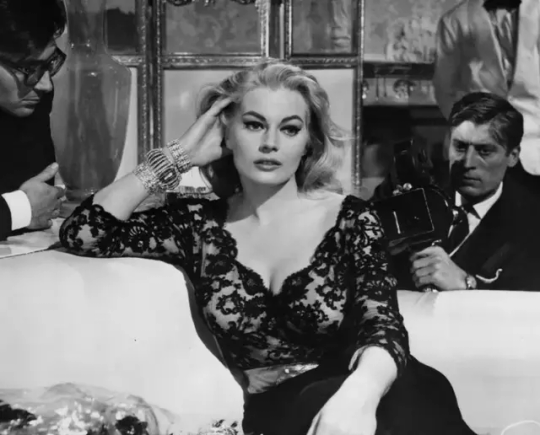
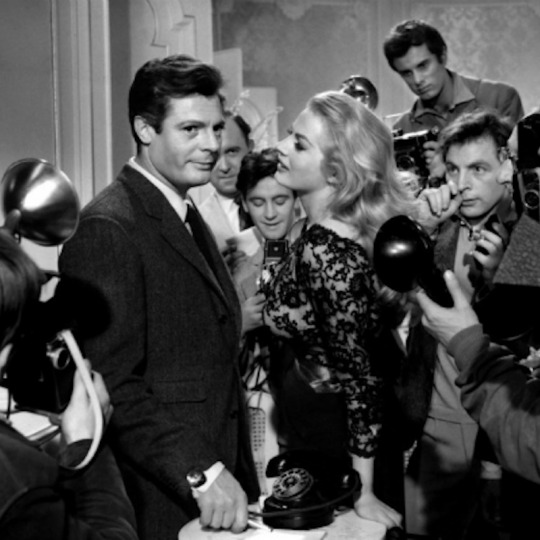
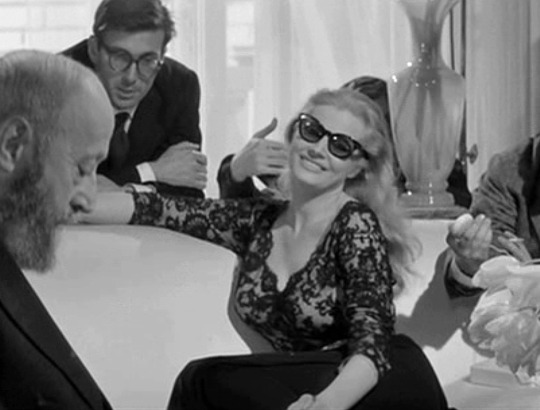
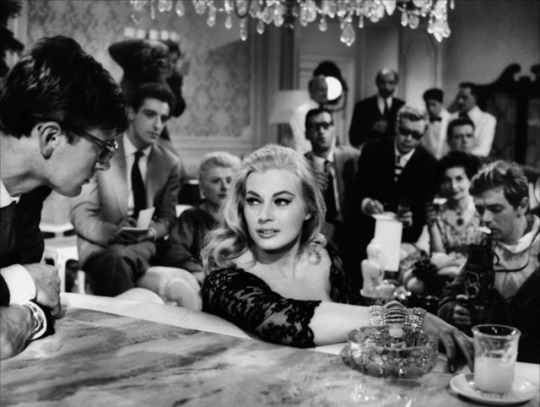
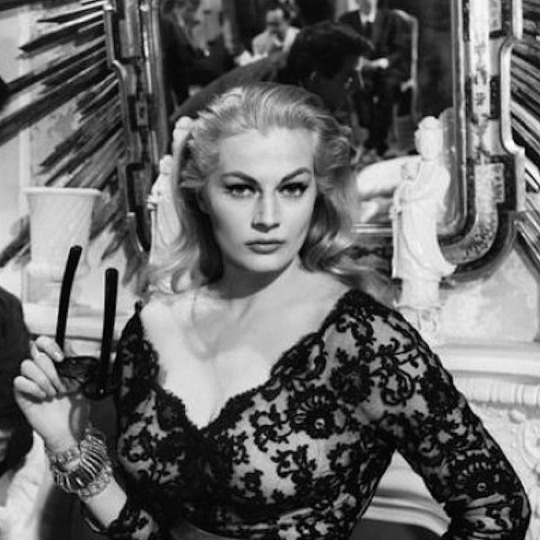
One Dress a Day Challenge
November: Oscar Winners
La Dolce Vita / Anita Ekberg as Sylvia
Year: 1961
Designer: Piero Gherardi
It was hard to choose a costume from this movie, well known for its fashion. There's Sylvia's famous strapless black dress, for example, or I also considered highlighting one of Marcello Mastroianni's suits. But I went with this lacy outfit because it's the one I remembered, however hazily, from the one time I saw this movie. I watched it when I went on an art film kick in college or shortly after. I was probably too young to appreciate it properly at the time; I wouldn't mind watching it again, but it doesn't seem to be available for streaming anywhere. Anyway, when I thought back on the look of it, I had a vague image of a woman sitting on a sofa and wearing something really cool in high-contrast black and white.
#la dolce vita#oscar winners#anita ekberg#one dress a day challenge#one dress a week challenge#movie costumes#1961 movies#1961 films#italian movies#italian cinema#italian films#1960s fashion#1960s style#60s fashion#60s style#piero gherardi#the sweet life#20th century costumes#black and white movies
36 notes
·
View notes
Text

Federico Fellini's Juliet of the Spirits (1965) / Costumes by Piero Gherardi
1 note
·
View note
Text
Everyone's Got Secrets... (House Husband AU)


A/N: When I first saw Pedro Pascal’s character rushing into battle at the start of this movie, my very first thought of him was this:
He moved in for the kill, just like a wolf.
What does that have to do with fanfiction, you might ask…? Simple. When you add to this the legend that a wolf helped create the city of Rome, my love of the 'Way Of The House Husband' show, and a chat with @braveincafleet , then you may figure out that this is how my little House Husband AU came to be.
Anyway...I hope you enjoy this just as much as I do, and if so, be sure to give it some love before you go back to your scrolling. Thanks! <3
Story Premise: This is a little intro/infodumped backstory for a modern/ex-Mafia version of General Acacius, as that seems to be a writing style I've consistently had over multiple fandoms. It's also a version where he's (obviously) retired and settled down with the modern version of Lucilla Verus, though there are still glimpses of what he used to be like here and there if one is looking hard enough.
Story Word Count: 779 words.
Special Notes: So...maybe I'll turn this into a series someday, maybe I won't. Until then, I'll try and poke around to find more Lucilla x Marcus fics as soon as I possibly can.
No Pressure Tags:
@sweetperfectioncloud @letsgobarbs @rav3n-pascal22 @lilac-boo @iseefire16
@ultra-nina-bella @lunnaisjustvibing @blueheisenbergtragedy @vichons @mysticalgalaxysalad
@hicanivent @marvelforever352 @thischarmingmandalorian and anyone else who would like to read more stories about our favorite General. ;)

Justin Acacius was, according to the neighbors of Imperator Street, a fairly cultured man who wouldn’t dare break the laws of their fair city. Indeed, all outward appearances have never given them reason to think otherwise, for any red flag moments have not yet presented themselves.
For example, by day, he keeps the household of their esteemed Head Curator, Lucilla Gherardi, in perfect working order. This includes making sure that Lucilla herself never leaves the house without a homemade lunch in her possession, because there isn’t much work that a person can accomplish on an empty stomach. During the rare moments that she does, however, it’s not long before he’s on the nearest available bicycle to catch up with her, sometimes even breaking local traffic laws just to get there in time.
(Thank goodness the nearby law enforcement have learned to let him off easy by now.)
Second, there’s what this couple’s closest neighbors have come to label as “Piero Watch”, the daily sighting of the family dog on its walk around 9:15 am every day, most often with Mr. Acacius getting somewhat pulled along behind them. After all, sometimes dogs will go exactly where you don’t want them to go.
Third, whereas some neighbors are occasionally guilty of noise pollution, there's no such disturbance from Signor Acacius' side of the street. Sometimes he brings a friend or two over for short visits, sometimes he goes out for last minute groceries like the supplies needed to make homemade pasta--oh, but never will any strange women be seen going into that house beside him.
He's married, obviously, so he's not about to throw away a good life on one foolish act.
And speaking of foolish acts…neither will anyone notice this gentleman plotting any violence behind Lucilla’s back while she’s out of the house. That’s a vice best left for lesser men, for instead of any shady dealings, he’s much more likely to get into surprise “Cutest Dog” duels with passersby like Mr. Macrinus, as there’s quite the following for groups like these over social media these days.
As Macrinus himself may tell you, these sorts of “battles” will leave no fatal wounds behind them, and all parties involved will go home satisfied.
And finally, by the time that night falls, there’s not much of a change other than the occasional smoke break, if not also the even rarer trip outdoors for a few last minute groceries. In other words, though he might be a slightly imposing figure at times…there’s absolutely nothing to fear where Mr. Acacius is concerned.
At least, not if you’re the average, well-to-do citizen…because for those who wear their sunglasses a bit darker, their skin a bit more tattooed, and keep one eye over their shoulder, it’s a slightly different story.
Should any members of this crowd pass Mr. Acacius in the streets, the title “Il Lupo” is the name they speak. Sometimes they say it with a voice full of fear, sometimes with awe, but all, regardless of their age, status, or sometimes even gender, as this is the 21st Milennia, don’t dare stick around too long.
For the individuals in charge of such groups, be they The Twins in the center to The Emperor a bit further north, they will on occasion ask Acacius’ advice on what seem like trivial matters, such as the right temperature to roast a head of garlic or what is the best detergent to wash out a bloodstain or several—oh, but always from clumsy kitchen accidents rather than any violent executions.
In case you haven’t heard, these modern people don’t do that sort of thing any more.
That’s as far as the mystery reaches, of course, for as the dead can’t reveal any secrets and the living wish to keep their honor, nobody’s ever going to consider speaking up instead. It’s highly doubtful any average person will ever know the truth about Mr. Acacius, either, as there are no known books or magazines ever published that might otherwise hint about his true identity.
If someone were to happen upon the oldest man on the same street where Mr. Acacius lives, however—specifically, the one with a faded SPQR tattoo upon one arm and no photographs of grandchildren in plain sight—maybe they’ll one day hear the story of how the one known as Il Lupo, the one who looks suspiciously like Justin, narrowly escaped life in an Italian prison. Maybe they’ll also hear all about how he became a married man not long afterward, and curiously moved to the very same street address where Mr. Acacius now lives.
But then again…a story’s just a story, wouldn’t you agree?
#gladiator ii#gladiator ii fanfiction#general marcus acacius#marcus acacius#marcus acacius x lucilla verus#lucilla verus#pedro pascal#90% headcanons 10% narrative#inspired by way of the house husband#way of the house husband#justin acacius
14 notes
·
View notes
Text

Does anyone want to talk about ekbergs pretino style dress that piero gherardi designed based off the iconic sorelle fontana house designed for ava gardner bc fellini was like 😍😍 And how that in itself plays out a perfect representation of what the film is commenting on with the correlation between the film and fashion industries coming together as large powers and deciders of desire. Or is it just me.
6 notes
·
View notes
Text
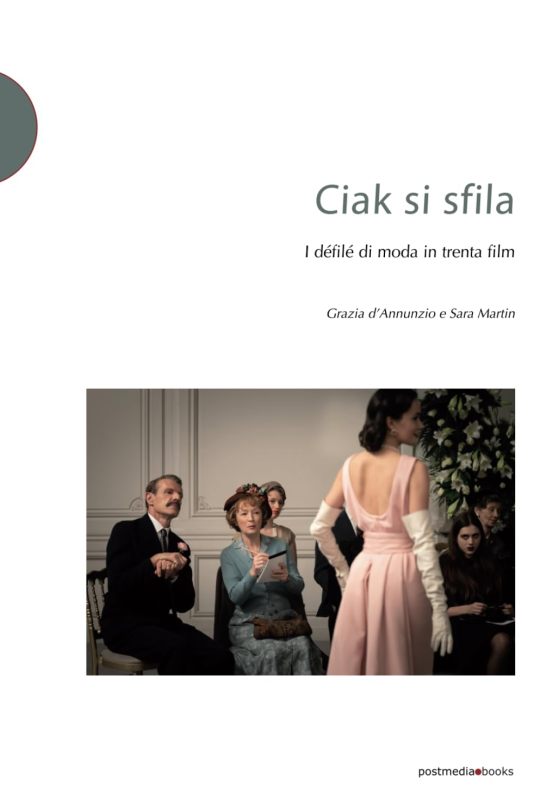

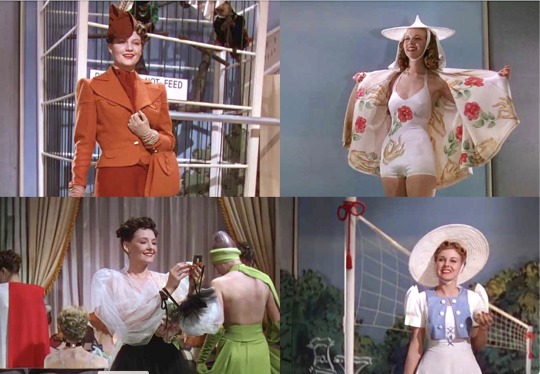

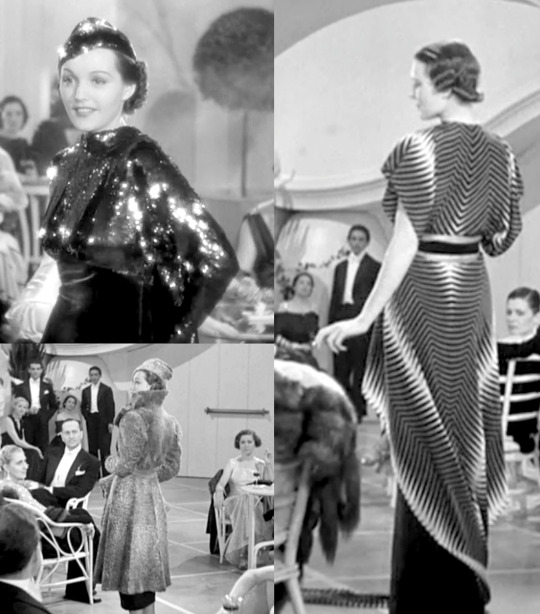



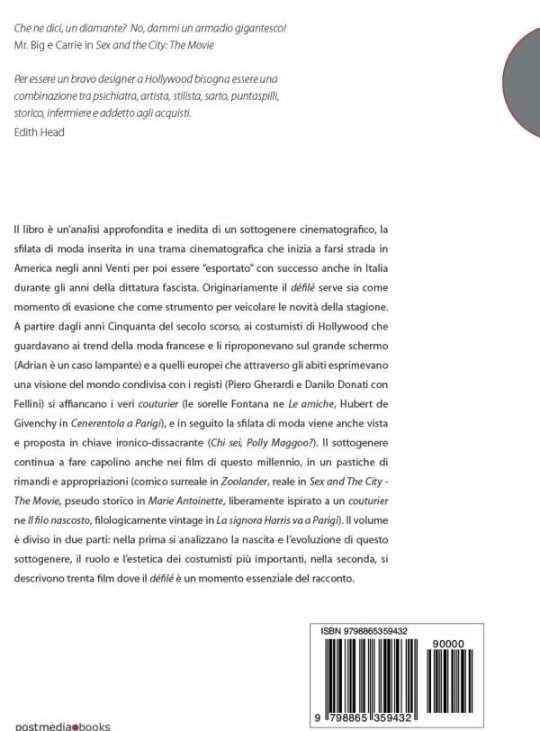
Ciak si sfila
I défilé di moda in trenta film
Grazia D'annunzio e Sara Martin
postmedia books, Milano 2023, 126 pagine, 31 immagini b/n e a colori, ISBN 978865359432
euro 19,00
email if you want to buy [email protected]
Il libro è un’analisi approfondita e inedita di un sottogenere cinematografico, la sfilata di moda inserita in una trama cinematografica che inizia a farsi strada in America negli anni Venti per poi essere “esportato” con successo anche in Italia durante gli anni della dittatura fascista. Originariamente il défilé serve sia come momento di evasione che come strumento per veicolare le novità della stagione. A partire dagli anni Cinquanta del secolo scorso, ai costumisti di Hollywood che guardavano ai trend della moda francese e li riproponevano sul grande schermo (Adrian è un caso lampante) e a quelli europei che attraverso gli abiti esprimevano una visione del mondo condivisa con i registi (Piero Gherardi e Danilo Donati con Fellini) si affiancano i veri couturier (le sorelle Fontana ne Le amiche, Hubert de Givenchy in Cenerentola a Parigi), e in seguito la sfilata di moda viene anche vista e proposta in chiave ironico-dissacrante (Chi sei, Polly Maggoo?). Il sottogenere continua a fare capolino anche nei film di questo millennio, in un pastiche di rimandi e appropriazioni (comico surreale in Zoolander, reale in Sex and The City - The Movie, pseudo storico in Marie Antoinette, liberamente ispirato a un couturier ne Il filo nascosto, filologicamente vintage in La signora Harris va a Parigi). Il volume è diviso in due parti: nella prima si analizzano la nascita e l’evoluzione di questo sottogenere, il ruolo e l’estetica dei costumisti più importanti, nella seconda, si descrivono trenta film dove il défilé è un momento essenziale del racconto.
14/12/23
#Ciak si sfila#defilé moda#30 film#Hollywood#Adrian#Givenchy#movie and fashion#fashion books#fashionbooksmilano
4 notes
·
View notes
Text
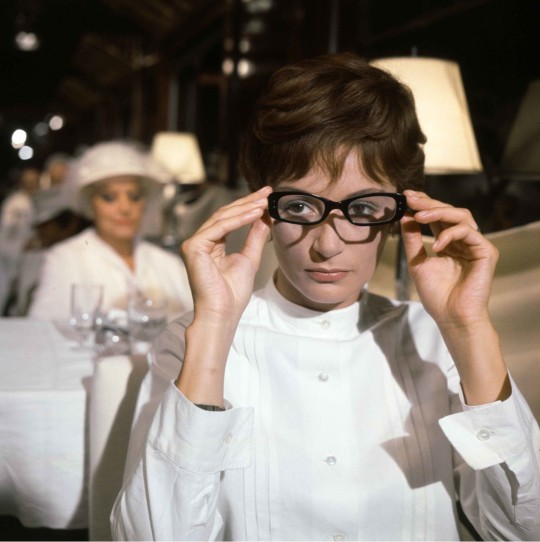


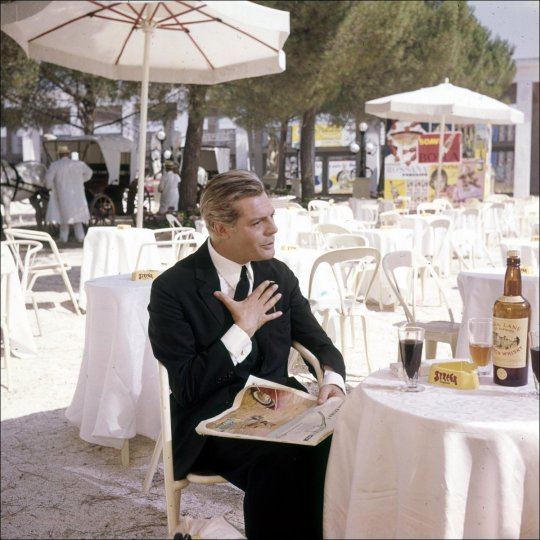
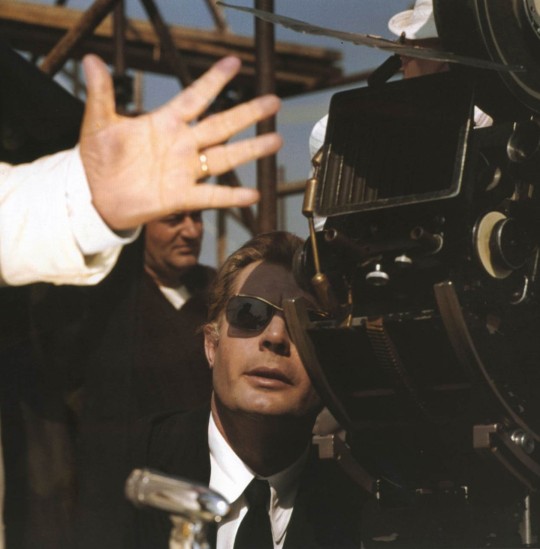
BEHIND-THE-SCENES SHOTS OF AN ARTHOUSE CLASSIC -- A SIXTY-YEAR-OLD MASTERPIECE IN 2023.
PICS) INFO: Spotlight on European cinema greats Anouk Aimée & Marcello Mastroianni✝ in behind-the-scenes shots of Federico Fellini's surrealist classic "8½" (1963). Archivio Storico del Cinema, AFE. 📸: Paul Ronald.
OVERVIEW: "As if by magic, Federico Fellini’s legendary black and white film 8 ½ makes an appearance in colour, immortalised by Paul Ronald. The producers asked him to photograph scenes in black and white. But Ronald had two hasselblad cameras, and he loaded the second one with a roll of colour film, not knowing what he would do with it.
Colour reveals all. It underscores the aesthetic choices’ resolute modernity, from the sets to Piero Gherardi’s costumes, the eminently contemporary figures of Anouk Aimée and Claudia Cardinale, and Marcello Mastroianni’s lecherous poses. It takes us out of the film’s rigorous structure, brings us behind the scenes and shows us the festive mood that prevailed on Fellini’s set."
-- LES RECONTRES DE LA PHOTOGRAPHIE, "Fellini, 8½ Colour Photographs by Paul Ronald, c. 2015, by Abbaye de Montmajour
Sources: www.rencontres-arles.com/en/expositions/view/354/fellini-8-colour, X, Republica Bologna, & The Eye of Photography.
#8½ Film#Arthouse Cinema#Cinema#1960s#Fellini#Marcello Mastroianni#Anouk Aimée#Arthouse#Avant garde#Surrealist Film#Italian Cinema#European Cinema#World Film#Italian Film#Vintage Style#Paul Ronald#Fashion#European Film#Avant-garde Cinema#Italian Style#Sixties#8½#8½ 1863 Movie#8½ 1963#Filmmaker#Filmmaking#Federico Fellini#60s Movies#Photography#60s
2 notes
·
View notes
Text
among many other things, underneath the "art vs artist" discourse lies, untouched and protected, the myth of the innate, mysterious, unique and visionary genius.
perhaps it's less evident when it comes to the art of writing but it shows its true colors when it's about cinema. directors are usually hailed as "geniuses", people, usually white men, who have made huge contributions to the world of art in its entirety. and, i mean, there's definetely some truth to that.
but nobody ever talks about the "other artists" behind the Artists because they're usually considered more like "technicians" than "True Artists". less "genius" and more "technique", aka work, manual and intellectual but nevertheless repeated over time, specialized. so people are shocked when they hear one of their favorite directors say that their costume designer has spent months researching into a specific type of fashion that was what the director had in mind for his movie. or when, surprise!, there's meticulous, cared-for storytelling even in set design! or that there are other screenwriters who work with the director to co-create something for all of us, who provide ideas and images and visions.
an example that comes to mind is one of my favorite directors, Federico Fellini. He's perhaps The Director because of his visceral connection with his movies and with the seventh art. He was a genius indeed. But Fellini's movies would be less Fellini-like without Ennio Flaiano's writing or Nino Rota's music or Piero Gherardi's custome designs or Giulietta Masina's acting. and, mind you, these people here are ALL Oscar winners. like, they are Big Names as well but they're rarely mentioned when talking about how Fellini was a genius.
there's a tendency, when watching, for instance, Fellini's movies, to only think about him as The Artist, The Genius. Why? Because we are somehow incapable of seeing art as belonging to more hands than just two, those of the Great Genius. there's a collective behind the artist AND the art. at best, everyone has contributed to something beautiful. at worst, there's a tacit connivance for power's sake that either goes undetected or unconfessed.
one might think that the myth of the genius is detached from the "Separate the Art from the Artist" debate but it's not until we start stopping seeing Artists as these inherently unique, grandiose, amazing geniuses that are bestowing their incredible gifts on us. from a political point of view, this is a quite dangerous approach. dangerous not exclusively in the sense that these are people with a lot of power in their hands and they may or may not use to their own advantage and/or to the detriment of other people. but because we are far more likely to absorb these geniuses' ideology and views because of their genius status, not even because of their actual art. because we are still in love with Geniuses, the (usually) men of "multifaceted ingenuity".
in other words, there is a discourse about power, politics and aesthetics that comes well before, or maybe that's underneath the "single artist vs his art" discourse and it has more to do with how Art is perceived and how we currently approach Art in the first place: what do we want and why do we want it? what are we looking for? has it always been this way? why are we seeking escapism and/or entertainment and/or stimulation? why these are the Big Names of our generation? why have we chosen them? have we chosen them? + many more questions.
0 notes
Text

Carlo Piscane, Tiberio Murgia, unidentified baby, Marcello Mastroianni, and Renato Salvatori in Big Deal on Madonna Street (Mario Monicelli, 1958)
Cast: Vittorio Gassman, Renato Salvatori, Memmo Carotenuto, Rossana Rory, Carla Gravina, Marcello Mastroianni, Claudia Cardinale, Carlo Piscane, Tiberio Murgia, Totò. Screenplay: Agenore Incrocci, Furio Scarpelli, Suso Cecchi D'Amico, Mario Monicelli. Cinematography: Gianni Di Venanzo. Production design: Piero Gherardi. Film editing: Adriana Novelli. Music: Piero Umiliani.
According to director Mario Monicelli, Big Deal on Madonna Street was intended not just as a parody of heist thrillers like Jules Dassin's Rififi (1955) but also of neorealism as a genre. We may get a glimpse of that when Tiberio (Marcello Mastroianni) hears that the target of the heist is a pawn shop: "My sheets are there," he says, perhaps reminding the audience of the scene in Bicycle Thieves (Vittorio De Sica, 1948) when the couple pawn their sheets so the husband can buy a bicycle. Whatever the target, Big Deal stands on its own as an Italian comedy classic, revealing the comic gifts of actors like Mastroianni and Vittorio Gassman, and providing a small but important role in the budding career of Claudia Cardinale. It's a tale of screw-ups, as everything possible goes wrong in the attempts of a crew of ne'er-do-wells to pull off a burglary that involves extensive planning, surveillance, and other feats that are just beyond their abilities. The comedy ranges from small ironies to broad slapstick, all set to a lively jazz score by Piero Umiliani.
#Big Deal on Madonna Street#Mario Monicelli#Carlo Piscane#Tiberio Murgia#Marcello Mastroianni#Renato Salvatori
1 note
·
View note
Text
Mina - Sono come tu mi vuoi (1967) regia e costumi Piero Gherardi
youtube
0 notes
Video
youtube
Mina - Se telefonando (1966) regia e costumi Piero Gherardi
1 note
·
View note
Photo

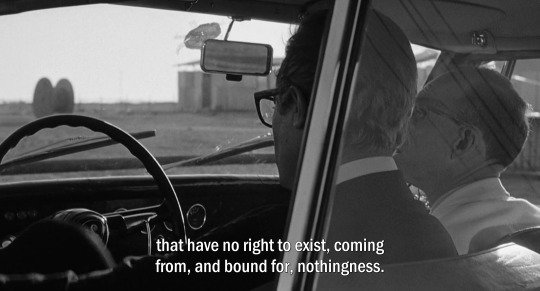
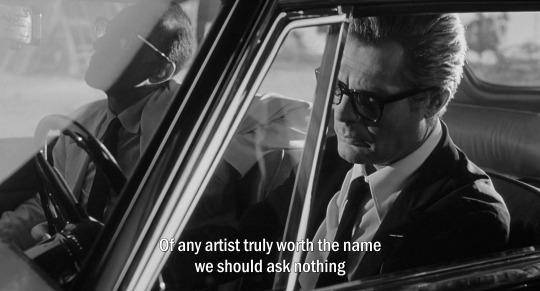
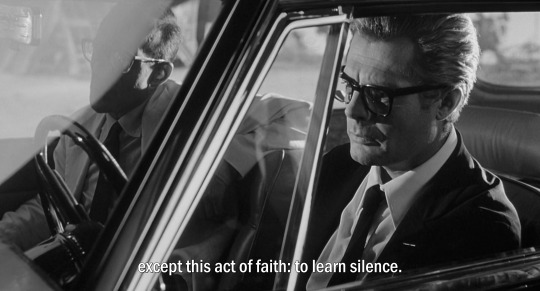
8½ (1963)
#film#movie#8½#otto e mezzo#fellini#marcello mastroianni#claudia cardinale#Piero Gherardi#Gianni Di Venanzo#silence#silenzio#faith#fede#artist#artista#images#words#immagini#parole
165 notes
·
View notes
Photo

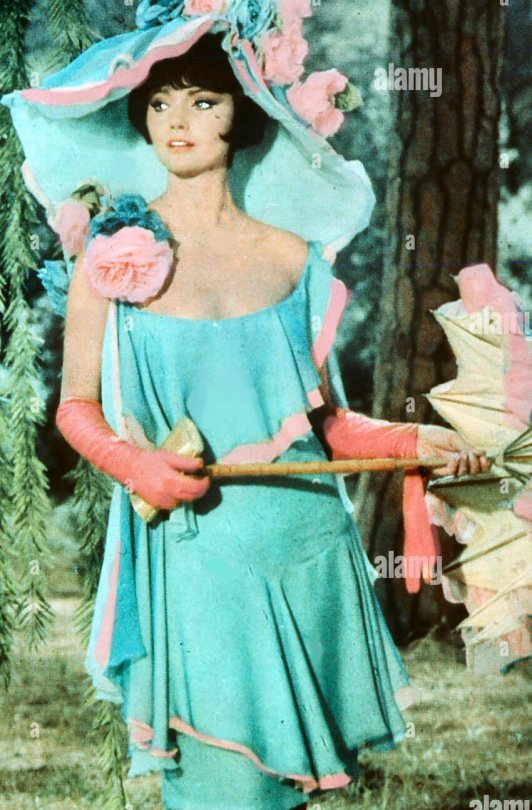
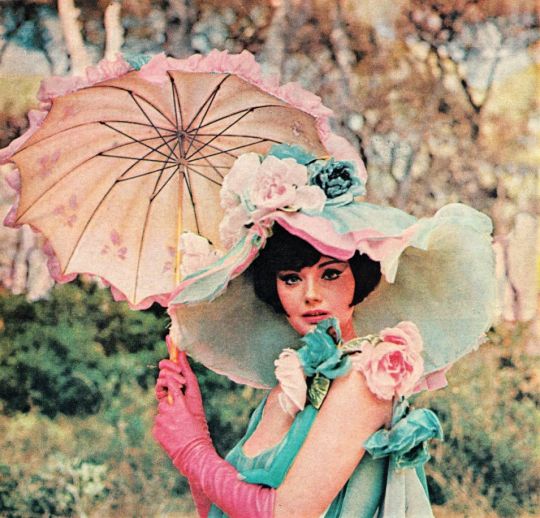
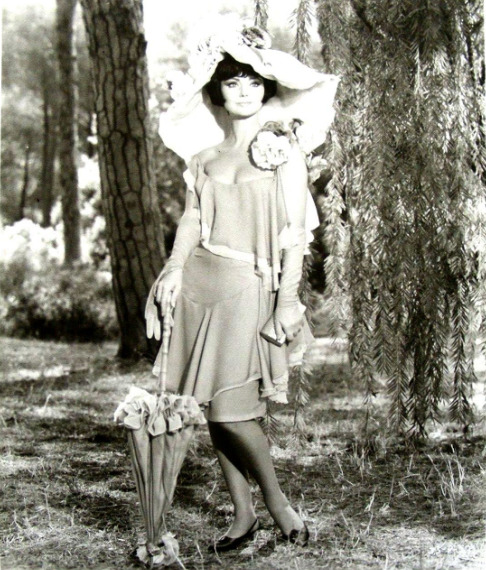
Sylvia (Sylva Koscina) Pink & blue dress.. in Juliette of the Spirits (Giulietta degli Spiriti) (1965).. Costume by Piero Gherardi.
20 notes
·
View notes
Photo

Giulietta Masina in Federico Fellini’s Juliet of the Spirits, 1965
Set and costume designer, Piero Gherardi
via: slowsoulburn
38 notes
·
View notes
Text
House Husband AU (WIP; title to be decided...):

Justin Acacius was, according to the neighbors of Imperator Street, a fairly cultured man who wouldn’t dare break the laws of their fair city.
By day, he kept the household of their esteemed Head Curator, Lucilla Gherardi, in perfect working order. The rooms were spotlessly clean at all hours; no sound pollution ever took place besides the quiet humming of his own tunes; and if that didn’t seem peaceful enough for this little town, the fact that he could make his own pasta from scratch just in time for dinner certainly clinched it.
There’s also what this couple’s closest neighbors have come to label as “Piero Watch”, the daily sighting of the family dog on its walk around 9:15 am every day, most often with Mr. Acacius getting somewhat pulled along behind them.
And finally, by the time that night falls, there’s not much of a change other than the occasional smoke break, if not also the even rarer trip outdoors for a few last minute groceries. In other words, though he might be a slightly imposing figure at times…there’s absolutely nothing to fear where Mr. Acacius is concerned.
At least, not if you’re the average, well-to-do citizen…because for those who wear their sunglasses a bit darker and keep one eye over their shoulder, it’s a slightly different story.
Should any members of this crowd pass Mr. Acacius in the streets, the title “Il Lupo” is the name they speak. Sometimes they say it with a voice full of fear, sometimes with awe, but all, regardless of their age, status, or sometimes even gender, as this is the 21st Milennia, don’t dare stick around too long.
For the individuals in charge of such groups, be they The Twins in the center to The Emperor a bit further north, they will on occasion ask Acacius’ advice on what seem like trivial matters, such as the right temperature to roast a head of garlic or what is the best detergent to wash out a bloodstain or several—oh, but always from clumsy accidents rather than any violent executions. In case you haven’t heard, these modern people don’t do that sort of thing any more.
That’s as far as the mystery reaches, of course, for as the dead can’t reveal any secrets and the living wish to keep their honor, nobody’s ever going to consider speaking up instead. It’s highly doubtful any average person will ever know the truth about Mr. Acacius, either, as there are no known books or magazines ever published that might otherwise hint about his true identity.
If someone were to happen upon the oldest man on the same street where Mr. Acacius lives, however—specifically, the one with a faded SPQR tattoo upon one arm and no photographs of grandchildren in plain sight—maybe they’ll one day hear the story of how the one known as Il Lupo, the one who looks suspiciously like him, narrowly escaped life in an Italian prison. Maybe they’ll also hear all about how he became a married man not long afterward, and curiously moved to the very same street address where Mr. Acacius now lives.
But then again…a story’s just a story, wouldn’t you agree?
(written for @braveincafleet; please like this post to join the taglist for the final copy! tysm!)
#gladiator ii#gladiator ii fanfiction#pedro pascal#justus acacius#modern AU#house husband AU#inspired by way of the house husband#way of the house husband AU (?)#idk but it's italian rather than japanese#this was my messy copy#works in progress#general acacius
8 notes
·
View notes
Text

Ava Gardner wearing the scandalous dress "il Pretino" created by Sorelle Fontana in 1956.
Some years later, in 1960, Piero Gherardi, the costume designer for Fellini's La dolce vita, took up the idea for the dress worn by Anita Ekberg in the film.

36 notes
·
View notes
Photo










Le notti di Cabiria (Federico Fellini, 1957).
#le notti di cabiria (1957)#le notti di cabiria#nights of cabiria#nights of cabiria (1957)#federico fellini#giulietta masina#aldo tonti#leo catozzo#piero gherardi
195 notes
·
View notes